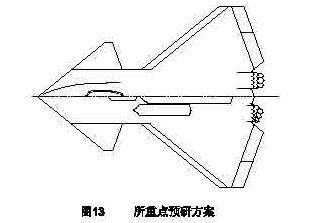A revolutionary, cognition-subverting next generation fighter jet, characterized by long-range, high capabilities in penetration, awareness, firepower and fast decision-making, is about to come into being amid great power competition, according to a recent paper by the chief designer of China's J-20 stealth fighter jet.
Artificial intelligence is a key field to help pilots process vast information and make decisions in complicated battlefield environments, it said.
Amid great power competition and the commissioning of more and more fourth generation fighter jets (or fifth generation under US classification, which includes China's J-20, US' F-22 and F-35), there have been extensive discussions on the changes in types of warfare, and the development of post-fourth generation fighter jets, said Yang Wei of Aviation Industry Corporation of China (AVIC), in a paper published in Acta Aeronautica et Astronautica Sinica, a Chinese monthly journal on aeronautics, last month.
Yang is the chief designer of China's first fourth generation fighter jet, the J-20.
In the paper, Yang said that in older generations of fighter jets, maneuverability used to be the deciding factor, but this concept is becoming outdated with the development of advanced medium-range air-to-air missiles with their beyond-visual-range attack capabilities.
Information has now become the deciding factor, as modern fighter jets focus on gaining more information with the help of AESA radars and data chains, while also reducing opponents' ability to gain information, including using stealth technology and electronic countermeasures.
When aircraft can get more information with these advanced devices, pilots must have extensive knowledge, sharp analysis and sound decision-making to put them to use.
Yang said artificial intelligence will help pilots process the information, and help them become mission objective-oriented.
Each step in the original observe-orient-decide-act (OODA) loop in the air combat decision-making process will feature artificial intelligence's assistance, the paper said. "Intelligence becoming the deciding factor" will be the essence of what Yang calls an OODA 3.0.
Citing foreign projects, Yang said that a future fighter jet will generally require a longer combat range, longer endurance, stronger stealth capability, a larger load of air-to-air and air-to-surface weapons, and the functionality to provide its pilot with easy-to-understand battlefield situation images and predictions. In an integrated system, the aircraft should be able to form a network, draw real-time integrated situational images, create multiple attack routes, and transmit target information across mission areas in real time.
Yang's vision could indicate what China's future fighter jet might be like, a Chinese military expert told the Global Times on Monday under the condition of anonymity.
Usually the Chinese military simultaneously equips a current generation of weapons, develops a next generation, and conducts pre-study on a further generation at the same time. So as J-20s are being commissioned into the Chinese Air Force, the next generation fighter jet must have already started development, the expert said.
China is eyeing to develop a next generation fighter jet by 2035 or earlier, which could feature laser, adaptive engines and the ability to command drones, reports in early 2019 quoted Wang Haifeng, another senior designer at AVIC who participated in the development of the J-20 and J-10 fighter jets, as saying.


